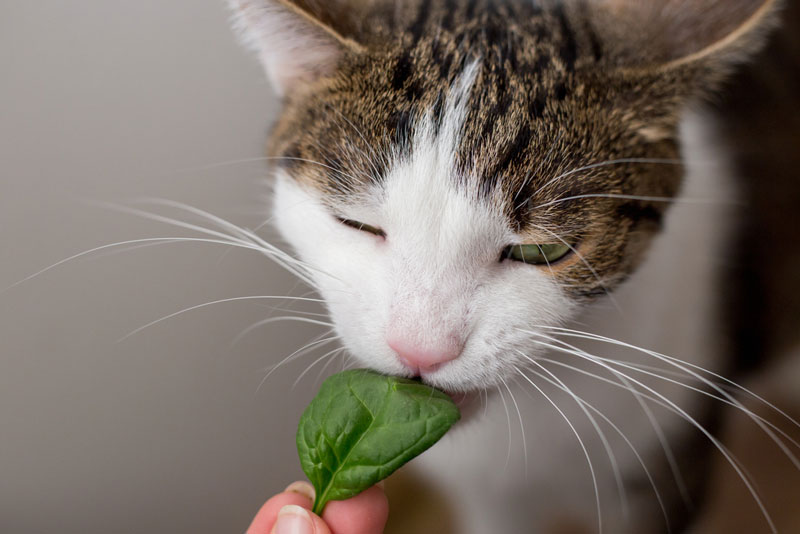Can cats eat leaves? It’s a question that many pet owners ponder. The short answer is yes, cats can eat some types of leaves, but it’s not always a good idea. Cats are obligate carnivores, which means their diet is primarily meat-based. While they may nibble on leaves occasionally, it does not provide much nutritional benefit for them. Some leaves can even pose health risks. So, let’s explore this further!
This inquiry leads us into an interesting realm of feline behavior. Cats often chew on grass or other leaves for various reasons, including to aid digestion or just for curiosity’s sake. However, not every leaf is safe for their delicate stomachs. Understanding what leaves are safe—and which ones to avoid—can help keep our whiskered friends safe and healthy. As we take a deeper look into this subject, we will learn about the benefits and risks of leaves in a cat’s diet.
We encourage you to keep reading! Together, we will explore how many leaves cats can eat, the benefits and risks of doing so, and some safe substitutes. There’s so much to learn about our beloved feline companions, and keeping them healthy is a journey worth taking!”
Can Cats Eat Leaves?

When it comes to leaves, not all are created equal, especially in a cat’s diet. Cats are known for their inquisitive nature, and it’s not uncommon to find them chewing on a leaf or two. The most common types of leaves that cats may nibble on include grass, dandelions, and certain herbs. Grass is often enjoyed by cats because it can help with digestion and may help expel hairballs. Additionally, some cats may simply enjoy the texture and taste of the leaves.
However, while grass is mostly safe, there are other leaves that can be problematic for cats. Many houseplants are toxic, including leaves from popular plants like philodendrons and lilies. If your cat decides to snack on these, it could lead to serious health issues. Therefore, it is vital that we keep an eye on what types of leaves they are consuming.
Furthermore, the occasional nibble of non-toxic leaves like grass or herbs may not be harmful. It’s always a good idea to monitor our cats and make sure they are not indulging in any suspicious greenery that may cause a tummy ache or worse. Always know the plants in your home and garden, and keep an eye on our curious cats!
How Much Leaves Can Cats Eat?
When considering how much leaves cats can eat, moderation is key. While some leaves do not pose a threat, it is best to limit the quantity. Cats may eat a small amount of leaves occasionally, but it should never become a staple in their diet. Just like any treat, a little can be good, but too much could lead to an upset stomach.
Cats may find joy in chewing on leaves, but we should consider their overall health and dietary needs as meat-based eaters. If we choose to allow our cats to munch on leaves, we should perhaps offer a small amount of safe grass or herb. If our kitty seems to have a preference for a certain type of leaf, we should still be cautious. Too much of a good thing can sometimes lead to bad! Always observe how your cat reacts to any leaf—if they seem unwell, it’s time to consult our trusted vet.
It’s worth noting that some cats may be more prone to exploring the plant world than others. Some may be cautious and give the plant a sniff while others dive right in for a full tasting experience. Regardless of their approach, how much they eat should be minimal. We can always encourage safer play habits. Providing cat grass or safe herbs can fulfill their leaf-eating desires while ensuring their health.
Benefits Of Leaves To Cats
1. Some leaves can be beneficial for cats. For example, grass and catnip can aid in digestion. Chewing on grass may help clear their digestive systems since cats can sometimes swallow fur while grooming. When they eat grass, it can stimulate their digestive tract, which can be super helpful when those pesky hairballs make an appearance!
2. Leaves can provide a fun experience for our feline friends. The act of chewing, nibbling, and tasting leaves appeals to their instinctive behavior. It can engage their senses and stimulate their curiosity. Plus, who wouldn’t want to watch their little buddy enjoy a new treat?
3. Eating safe leaves like dandelions or grass can provide them with a tad bit of fiber. While they require meat for proper nutrition, fiber helps in overall digestive health. Although it won’t fulfill their high protein needs, some occasional green nibbles can assist with maintaining their health.
4. Some cats enjoy certain leaves so much that it can help reduce stress and anxiety. Simply leaving out safe herbs like catnip can have a calming effect. It’s like a little spa getaway for our furry pals when they get to interact with the plants they love!
5. Engaging our cats in activities that involve leaves can promote physical activity. Trying to catch flying leaves or play with moveable plants can stimulate their playful side and keep them active. Just make sure, as loving pet owners, we balance this with their proper nutrition!
Dangers Of Feeding Leaves To Cats
Just as there are benefits, we need to be aware of the potential risks. It is our responsibility as caretakers to keep our furry friends safe. One of the biggest dangers is the ingestion of toxic plants. Common household plants like peace lilies, philodendrons, and oleander can be deadly for cats. They may cause symptoms such as vomiting, diarrhea, or more serious health issues.
Another risk is that not all leaves are easy to digest. Even if the leaf isn’t toxic, it may still upset a cat’s stomach if eaten in large quantities. Signs that our cats may have eaten something bad include vomiting, diarrhea, and lethargy. In these cases, we should monitor them closely and consult a vet if the symptoms persist.
Let’s not forget that some cats may simply be allergic to plants or grasses. If our feline friend seems itchy, is experiencing digestive problems, or seems uncomfortable after eating leaves, we must take it seriously. It’s important to determine which leaves seem to bother them and avoid them in the future.
In addition, some pets might be attracted to plants due to the scent of pesticides or chemicals used in gardens. If they chew on treated leaves, it can lead to serious health complications. It’s always safest to keep our fur buddies away from unsupervised plant areas.
The bottom line? While it can be fun to let our cats explore the green world, we must stay vigilant about what they are eating. Keeping a watchful eye and knowing which plants are safe versus unsafe can help keep our furry companions happy and healthy.
Substitute Of Leaves For Cats
1. Cat Grass: This is a fantastic option if your kitty is a fan of chewing on greens. Cat grass is often a mix of oats, wheat, or barley. It is safe for cats and can provide a little extra fiber without the risks associated with other leaves. You can even find pots of it at pet stores to keep things fun!
2. Catnip: This is another great alternative. Many cats adore catnip, and it’s a wonderful way to engage with them in a playful manner. Catnip doesn’t just provide them with a healthy page; it also offers mental stimulation and enjoyment. Some cats may roll around and purr with joy as they interact with the catnip.
3. Herbs: If your cat enjoys chewing leaves, consider offering them herbs such as basil or parsley in small amounts. These herbs are generally non-toxic and can provide a new flavor experience. Always introduce any new food gradually and in small amounts to avoid tummy troubles.
4. Non-toxic Leafy Greens: You can also try offering non-toxic leafy greens like romaine lettuce or spinach. These greens are safe and can be a refreshing snack for your kitty. Always wash them well before giving them to your cat, and ensure they’re fresh and free from any chemicals.
5. Cat Toys: If your cat is more focused on something to chase, consider using safe cat toys designed to look like leaves or plants. It can engage their curiosity without the risks of them eating something harmful. Toys with varieties can keep our cats entertained while avoiding plant-related health concerns.
Can Cats Eat Leaves? Frequently Asked Questions
What Plants Are Safe For Cats?
There are several plants that are generally considered safe for cats, like catnip, cat grass, and certain herbs. Just make sure to check the specific plant type before letting your cat munch!
Can Cats Eat All Kinds Of Leaves?
No, cats cannot eat all kinds of leaves. It is important to know which plants and leaves are safe and which are toxic to cats. Always double-check before letting them explore.
How Can I Tell If My Cat Has Eaten Something Toxic?
It’s important to know the signs. If your cat vomits, has diarrhea, seems lethargic, or has trouble breathing, reach out to a vet immediately! Some symptoms can be serious.
What To Do If My Cat Eats A Toxic Plant?
If you believe your cat has ingested a toxic plant, contact your vet or a pet poison hotline immediately! They can provide specific advice on how to treat the situation.
Can Leaves Help With Hairballs?
Yes! Some cats eat leaves like grass to help facilitate hairball expulsion. It can stimulate their digestive system and help them eliminate hairballs more comfortably.
Final Thoughts
In conclusion, can cats eat leaves? Yes, but it’s crucial that we know which leaves are safe and which are risky for our feline friends. While there are benefits to some types of leaves, we must remain vigilant about potential dangers and keep our cats safe. Always offer treats and alternatives in moderation and consult with a vet if you are uncertain about anything.
Learning about our cats’ behaviors and ensuring their well-being is our responsibility and a sign of being a caring pet owner. If you want to read more on pet health and care, you can check out articles on how cats navigate chocolate or explore whether dogs can enjoy pineberries. Each of these offers a new adventure in pet ownership!
It’s a wild world of cats, and loving them while keeping them healthy is what we strive for. Happy exploring!


